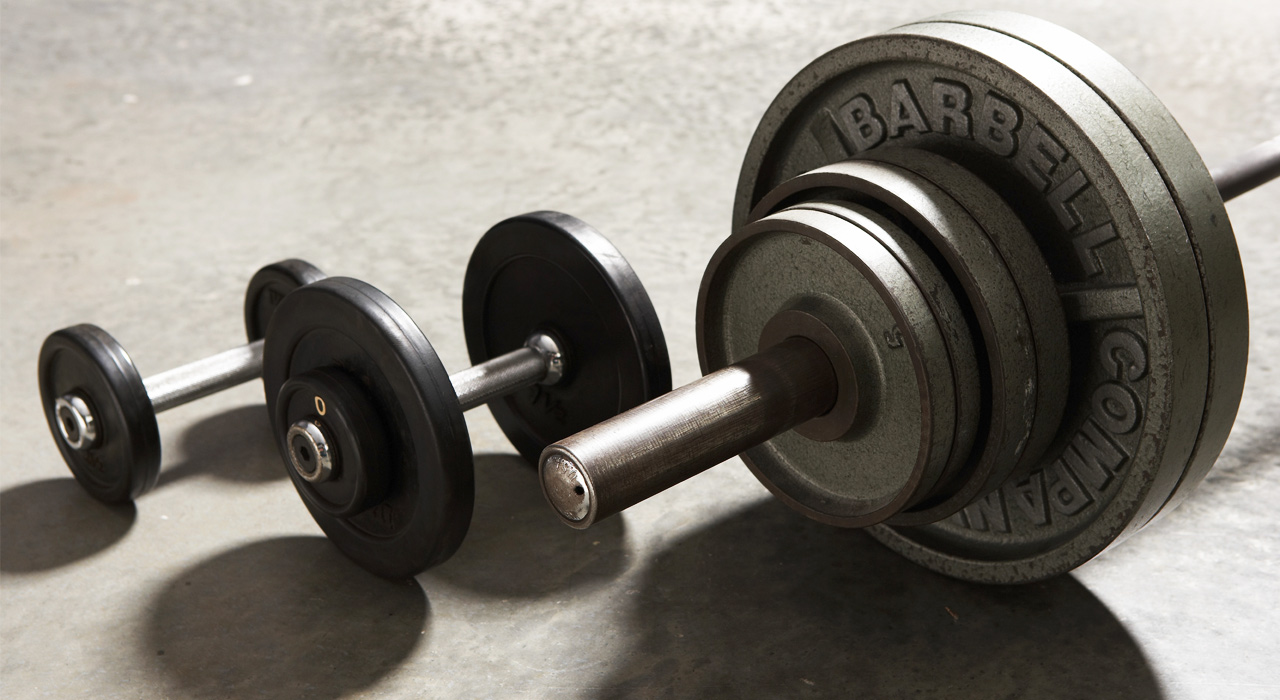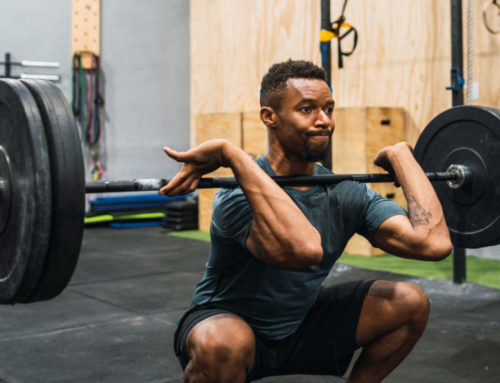Cut through all the conflicting BS and find out which numbers you should be paying attention to for the greatest gains.
Which rep ranges to build muscle?
2-6 – reps greatest for strength gains
20-35 reps greatest for endurance gains
2-35+ reps greatest for muscle growth
Why? When volume load (eg. 3 sets of 10 or 10 sets of 3) is accounted for, studies almost always show that hypertrophy is similar with heavy or light loads.
Which loads build muscle?
30-90%
of 1 rep max are the loads you can use to induce muscle growth.
70-85% – SWEET SPOT
of 1 rep max. Working with these loads in your sets is the sweet spot for your hypertrophy, strength and time efficiency. Doing 10 sets of 3 at 90%+ of your 1RM for each exercise would take an age in the gym.
2-3
The optimal frequency to train each muscle group per week. The 1 day a week “bro-split” was found to be sub-optimal
SETS
How many sets per week, per body part to build the most muscle?
< 5 sets gained 5.4% more muscle
5-9 sets gained 6.6% more muscle
10 sets+ gained 9.8% more muscle
This data shows the dose-response between more volume (to a point) and muscle growth.
Source : Journal of Sports Sciences

What training could I do with the time I have based on the science…?
2-3 x per week : Full Body Workout
4 x per week : Upper Body/Lower Body
5 x per week : Power Hypertrophy – Upper Power/Lower Power/Back+Shoulders hypertrophy/Lower body hypertrophy/Chest+Arms hypertrophy
6 x per week : Push/Pull/Legs/Push/Pull/Legs
900+
The amount of strength and resistance training exercises that exist.
49 = muscles worked simultaneously by the deadlift. The highest of any single exercise (that isn’t a complex movement)
source : Strength Training Anatomy
How much muscle can you naturally gain? Well, it depends how long you’ve been at it…
Up to 1 year : 20-25 pounds (2 pounds per month)
2 years : 10-12 pounds (1 pound per month)
3 years : 5-6 pounds (.5 pound per month)
4 years : 2-3 pounds (not worth calculating)
3 minutes vs 1 minute rest periods
Leaving the gym dripping in sweat because you’re jumping from one exercise to the next without resting up in between might not be your best bet..
3 – minute rest periods were shown to increase both strength and muscle thickness in triceps, biceps and legs.
1 – minute rest periods showed less gains in both strength and mass. This is hypothesized to be due to less volume being performed due to muscle fatigue
This doesn’t mean rest for long periods exclusively as compound exercises for larger muscle groups will inevitably require more rest time than isolation exercises for small muscle groups.
30-90 seconds for small muscle, isolation exercises.
2-5 minutes for larger muscle groups and compound movements.
Source: Journal of Strength and Conditioning Research
Ideal rep speed for maximum gains
1 second – concentric portion of a lift
1-3 seconds – eccentric portion of a lift
28% – more muscle mass when following the guidelines above vs a superslow lift
36% – less muscle activation when any portion of the lift takes longer than 5 seconds
3 seconds – the longest the eccentric portion should take.
Source : Journal of strength and conditioning research
Fiber types of lifters
The fiber type make-up of trainees for three disciplines
Type 1 slow twitch vs Type 2 fast twitch
36% : 64%
Weightlifters
38% : 62%
Powerlifters
57% : 43%
Bodybuilders
Type 2 fast twitch – more potential for explosive power
Type 1 slow twitch – more potential for endurance
Both – potential for muscle growth (More growth potential in type 2)
Source: Sports Medicine Journal
Powerlifter vs Bodybuilder
1993 – An elite bodybuilder, Tom Platz and an elite powerlifter, Fred Hatfield went head to head in various tests
855 – pounds was what Fred put up on a squat out-lifting Platz’ 765lbs
23 – reps that Mike Platz performed when they went down to 525lbs, blazing Fred’s 11 reps.
This lends credence to bodybuilding have more type 1 fibers for endurance and powerlifters having a higher ratio of type 2 for explosive strength.
References
Dose response relationship volume and hypertrophy
https://www.ncbi.nlm.nih.gov/pubmed/27433992
Effects of frequency for muscle growth
https://www.ncbi.nlm.nih.gov/pubmed/27102172/
Role of training on muscle fibre types
https://www.ncbi.nlm.nih.gov/pubmed/15335243







